#it’s about the ~format~
Explore tagged Tumblr posts
Text
everyone keeps talking about spotify wrapped while i’m on pins and needles waiting for my Goodreads Year in Review to come out
#even though i can see all my books already LOL#it’s about the ~format~#and the ~stats~#and i’ve actually almost met my reading goal for the year!#this is my second year doing the challenge and i think i’ll get it done this time#heehee#jane talks#books#reading#goodreads#spotify wrapped
14 notes
·
View notes
Text
Reading Mockingjay as an adult is extra devastating because. Of course the plucky teenager and her ragtag friends aren't going to sneak into a government building to kill the president with a bow and arrow. That's absolutely ridiculous. It's the kind of thing that's only possible in the kind of propaganda that Coin developed. But she's so good at it that in some ways she tricks the reader into thinking that's the kind of story this is, too--even after 3 books reminding us that pretty much everything that Katniss does the second she volunteers is manipulated by adults pulling strings to make propaganda in some form or another.
#rotating it in my brain#monstrous-femme said Coin was using the YA novel format as propaganda#and yeah. YEAH#where's that review that's like. oh. turns out it wasn't about the love story after all.#thg#the hunger games#mockingjay
20K notes
·
View notes
Text

Day 3630 - 29 May 2024
39
.//projectTiGER
#projecttiger#vocaloid#hatsune miku#doodle#I did not intentionally make the 39 huge it seems that the tumblr formatting feels very strongly about it.
10K notes
·
View notes
Text
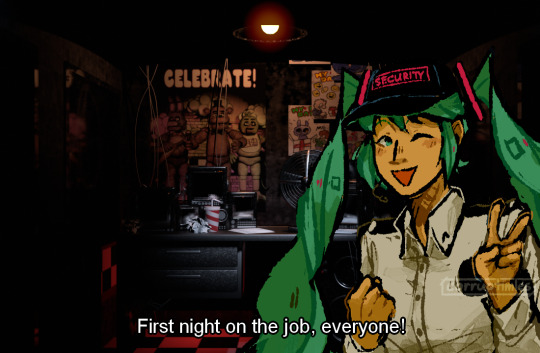
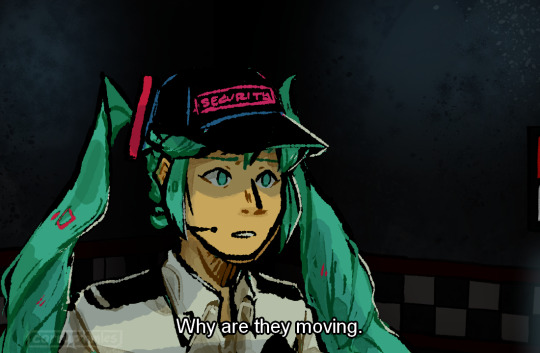
MikuAllWeeku Day 4: Five Nights at Freddy's
#if you recognize this exact format from a different art of mine uhhh lol#mikuallweeku#miku goes turbo#hatsune miku#vocaloid#fnaf#five nights at freddy's#I dont have a drawing tag#sorry im late i was thinking about mop psychics 😔
39K notes
·
View notes
Text
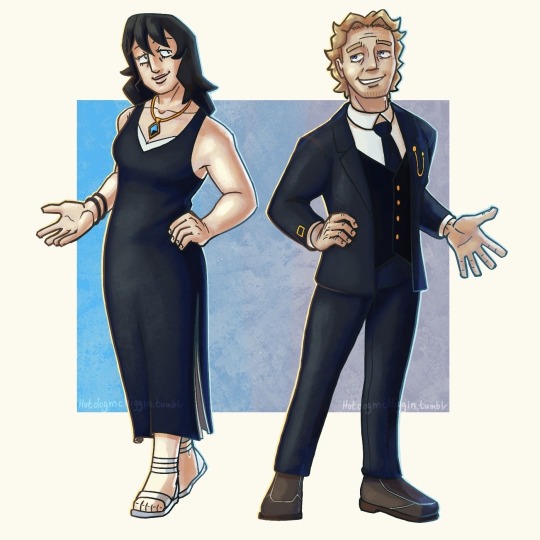
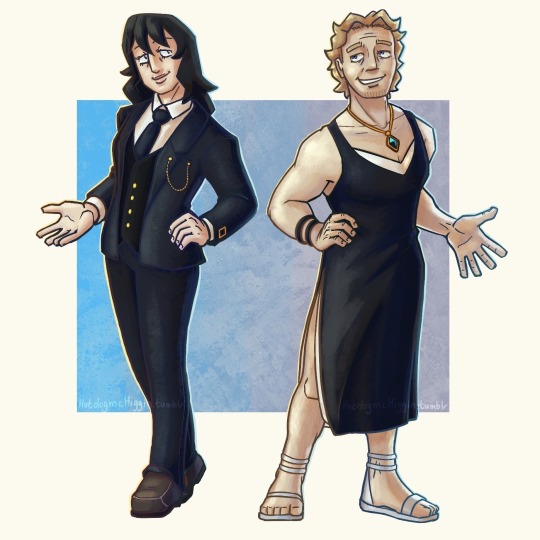
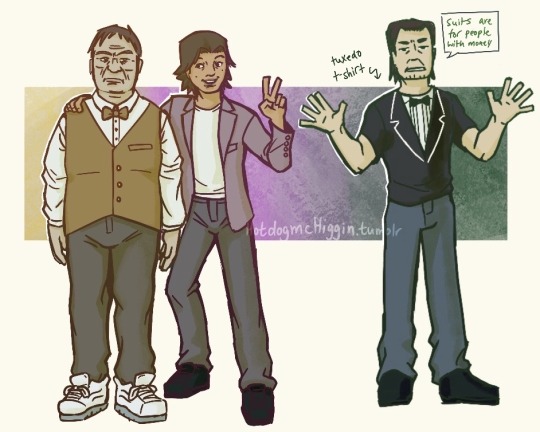
Company Mandated Fancy Fits on the Tulpar 😏
Also had to include the REAL star of the show (and a bonus)
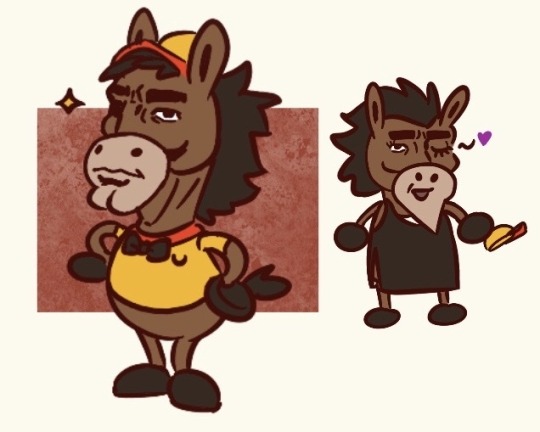
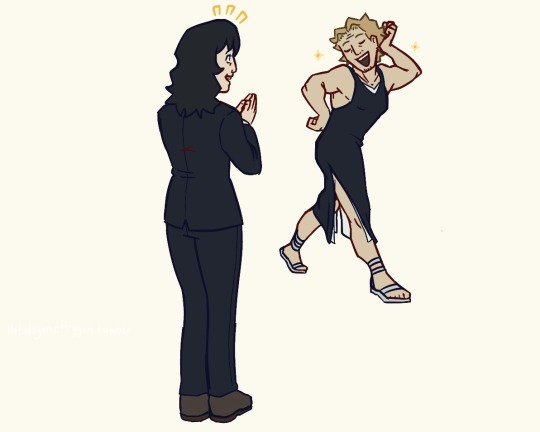
Based off of this and this. Thank you very much joetastic for being inspirational 👍
The REAL reason this is late

#just pretend I posted this like 6 days ago 😁👍#<-got distracted#sorry I’m Afflicted with The Curse and everything just takes me a long time#also right now I’m just kind of being experimental with my workflow and style right now so stuff is just naturally taking a bit longer#mouthwashing#mouthwashing fanart#anya mouthwashing#mouthwashing anya#nurse anya#curly mouthwashing#captain curly#mouthwashing curly#swansea mouthwashing#daisuke mouthwashing#jimmy mouthwashing#myart#anyway my new years resolution is to put more WOMEN in SUITS and MEN in DRESSES#had fun drawing this but still not too sure about the rendering style just yet. probably just gonna keep playing around with shit#IM DOING IT SCARED but im DOING IT#im also still trying to figure out how to Social Media#am i doing it right#GRAAAHHHHHHH I NEED TO BETTER UNDERSTAND FORMATTING POSTS#i have a more serious mouthwashing piece in the works but wanted to get this done first lol#honestly I have a buncha sketches I should post too#i like them but they’re not really composited very well if you catch my drift. been having trouble with sketch page layout recently#which is kind of antithetical to the idea of a sketch page but you know how it is with spaghetti#i doodled the others on the side and liked how they looked so i just put some color and basic shading on them#edit: realized i forgot to change the color of the ‘lapel’ on jims shirt lol
3K notes
·
View notes
Text
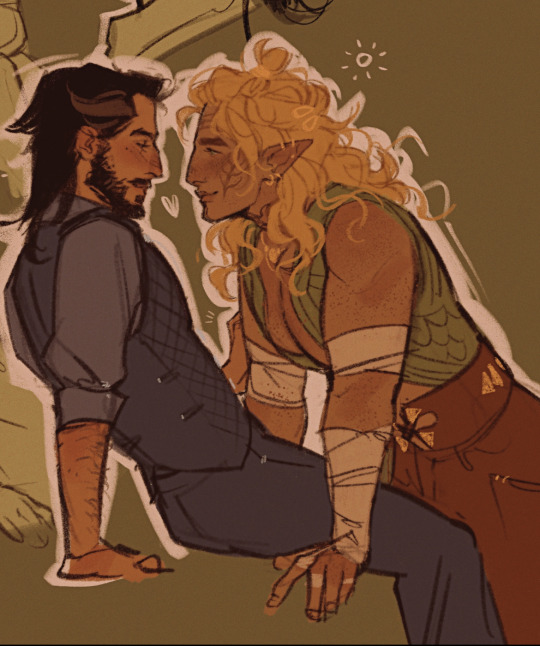
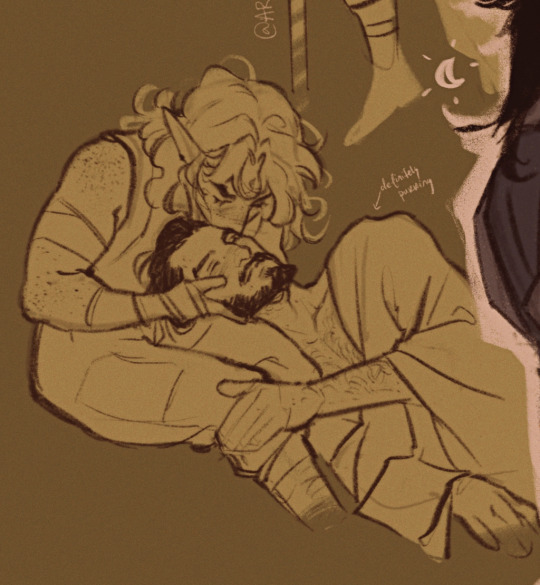
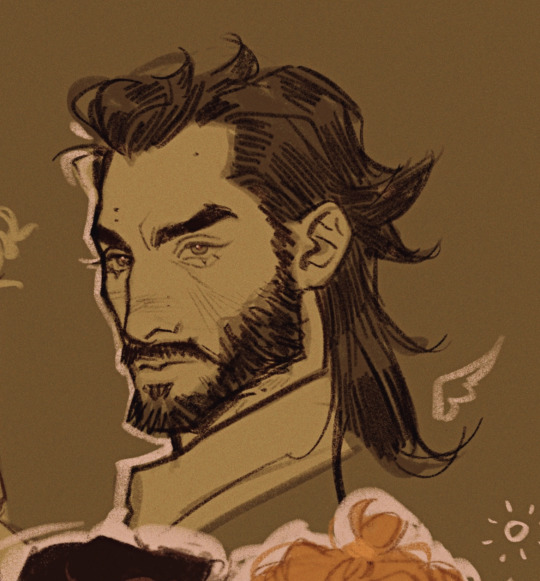

hello rookanis nation. can i present rel and lucanis’s dynamic. sun and moon trope, one with boundless energy and one who gets 2 hours of sleep a night, guy i pulled by being an idiot, etc. they’re special to me
#rookanis#lucanis dellamorte#datv#dragon age the veilguard#veilguard#dragon age#reposting bc i wanted to format it differently thank u thank u#anyway what i said in the other tags is that when spite sleepwalks rel never wakes lucanis up he just like hangs out with spite#they play wicked grace#also rel isn’t allowed in the kitchen bc he burnt a hole in the pan one time trying to make an omelette#and yes of course rel is a sweets guy ofc i chose the sweet drinks option#rel is full of boundless optimism and stupidity#him and lucanis are like that one tumblr post about being morosexual#rel: what color is the pink panther#lucanis taking his clothes off: rel you’re so fucking stupid#my art
4K notes
·
View notes
Text
the question, you see, is not ‘is it too ooc for this character to cry’ but rather ‘what circumstances would push this character to cry’
this is the whump wisdom, go forth and make that character cry
#gav gab#‘it’s sooooooo ooc to make that character cry’ no you see I think it is ooc#to put this character through absolute unimaginable hell physically and emotionally#and NOT let them cry about it#sometimes canon framing and media format and genre#limit the ability to let a character emotionally Feel all the insanely traumatic shit that’s happened to them#that doesn’t mean that in a different medium or genre exploring these things#it would be ooc for them to do so#send tweet. let those characters feel and emote. it’s not ooc or cringe and anyone who tells you it is is a reductive dick
18K notes
·
View notes
Text
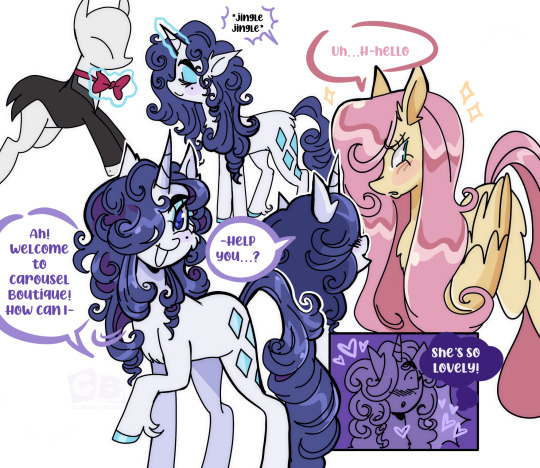
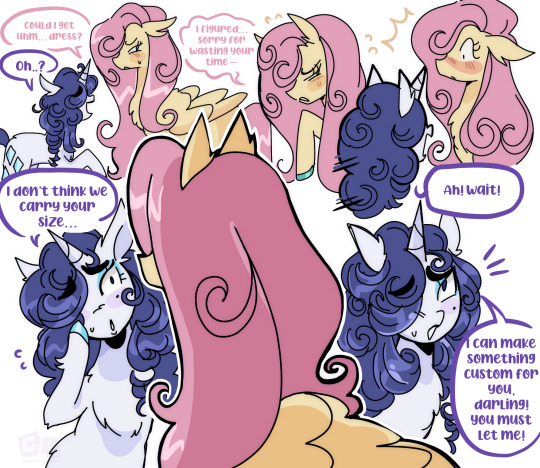
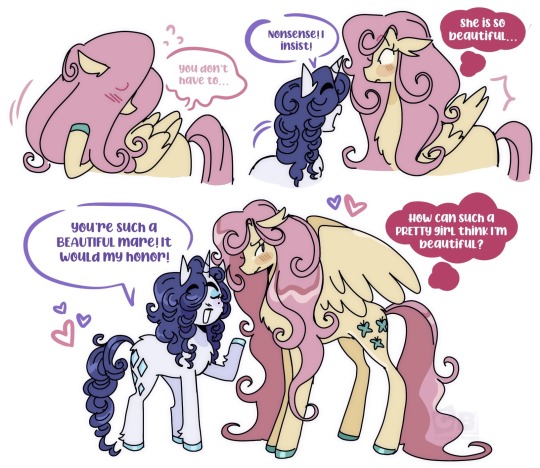
walk with me, walk with me yall….
#i know it’s hard to read im sorry#i don’t think about my comic format until i draw#and it doesn’t make sense#my art#fan art#art#illustration#my art!#rarishy#fluttershy#rarity#mlp g4#mlp fanart#my little pony#my little pony friendship is magic#mlp fim#mlp fan art#mlp friendship is magic#character design#character redesign
16K notes
·
View notes
Text
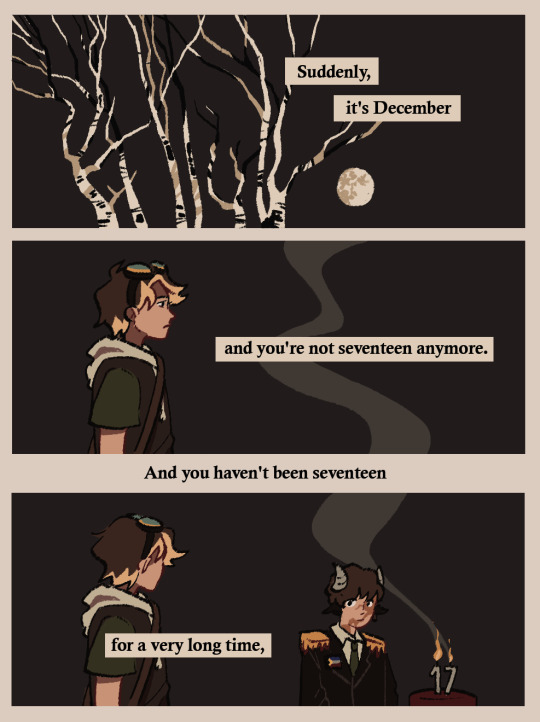
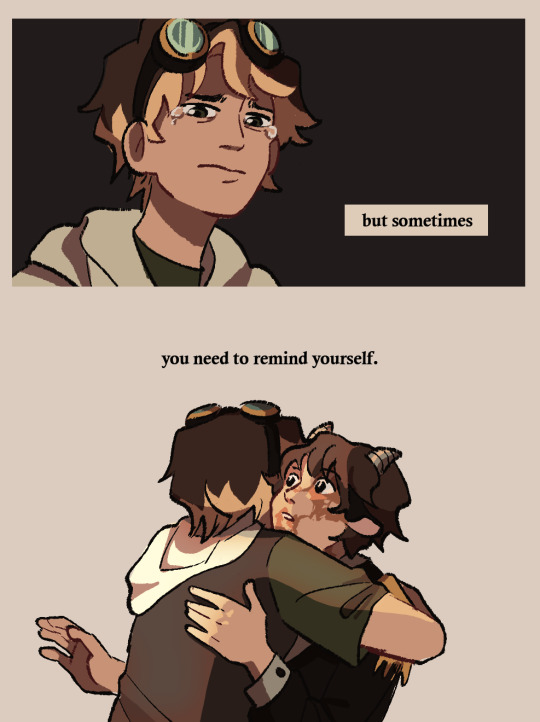
Suddenly, it's December by margaux paul
#tubbo#tubbo fanart#qsmp#dsmp#not lore related! this quote just resonated with me and by proxy I will project that to my favourite characters :D#my art#something I've noticed is that my comic-style format has MUCH better flow here on tumblr than on twitter#much to think about#my comics
11K notes
·
View notes
Text

#roblox pressure#sebastian solace#pressure roblox#sebastian pressure#pressure meme#i forget who made it but i saw a meme about bedman with this same format: “yeah i’m mtf. male to furniture.”#and i got inspired
3K notes
·
View notes
Text
What does life in North Korea look like outside of Pyongyang? 🇰🇵
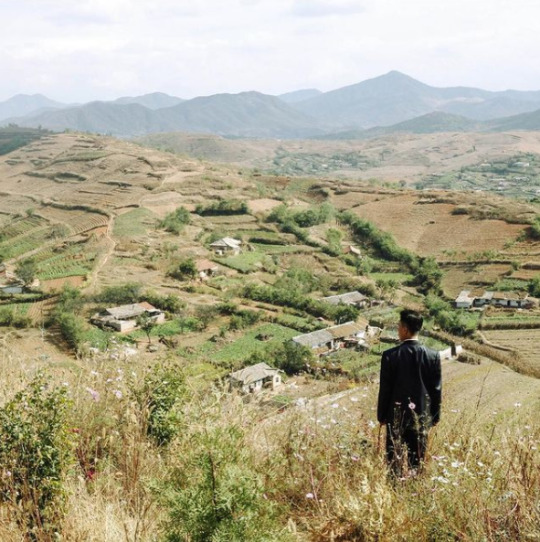
Hey, I'm back again with a very scary "tankie" post that asks you to think of North Koreans as people, and to consider their country not as a cartoonish dystopia, but as a nation that, like any other place on earth, has culture, traditions, and history.
Below is a collection of pictures from various cities and places in North Korea, along with a brief dive into some of the historical events that informs life in the so-called "hermit kingdom."
Warning: very long post
Kaesong, the historic city
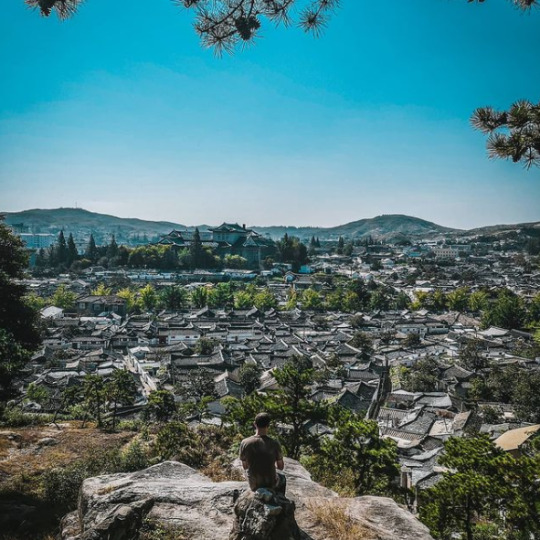
Beginning this post with Kaesong, one of the oldest cities in Korea. It's also one of the few major cities in the DPRK (i.e. "North Korea") that was not completely destroyed during the Korean war.
Every single city you'll see from this point on were victims of intense aerial bombardments from the U.S. and its allies, and had to be either partially or completely rebuilt after the war.
From 1951 to 1953, during what has now become known as the "forgotten war" in the West, the U.S. dropped 635,000 tons of bombs over Korea — most of it in the North, and on civilian population centers. An additional 32,000 tons of napalm was also deployed, engulfing whole cities in fire and inflicting people with horrific burns:
For such a simple thing to make, napalm had horrific human consequences. A bit of liquid fire, a sort of jellied gasoline, napalm clung to human skin on contact and melted off the flesh. Witnesses to napalm's impact described eyelids so burned they could not be shut and flesh that looked like "swollen, raw meat." - PBS
Ever wondered why North Koreans seem to hate the U.S so much? Well...
Keep in mind that only a few years prior to this, the U.S. had, as the first and only country in the world, used the atomic bomb as a weapon of war. Consider, too, the proximity between Japan and Korea — both geographically and as an "Other" in the Western imagination.
As the war dragged on, and it became clear the U.S. and its allies would not "win" in any conventional sense, the fear that the U.S. would resort to nuclear weapons again loomed large, adding another frightening dimension to the war that can probably go a long way in explaining the DPRK's later obsession with acquiring their own nuclear bomb.
But even without the use of nuclear weapons, the indiscriminate attack on civilians, particularly from U.S. saturation bombings, was still horrific:
"The number of Korean dead, injured or missing by war’s end approached three million, ten percent of the overall population. The majority of those killed were in the North, which had half of the population of the South; although the DPRK does not have official figures, possibly twelve to fifteen percent of the population was killed in the war, a figure close to or surpassing the proportion of Soviet citizens killed in World War II" - Charles K. Armstrong
On top of the loss of life, there's also the material damage. By the end of the war, the U.S. Air Force had, by its own estimations, destroyed somewhere around 85% of all buildings in the DPRK, leaving most cities in complete ruin. There are even stories of U.S. bombers dropping their loads into the ocean because they couldn't find any visible targets to bomb.
What you'll see below of Kaesong, then, provides both a rare glimpse of what life in North Korea looked like before the war, and a reminder of what was destroyed.
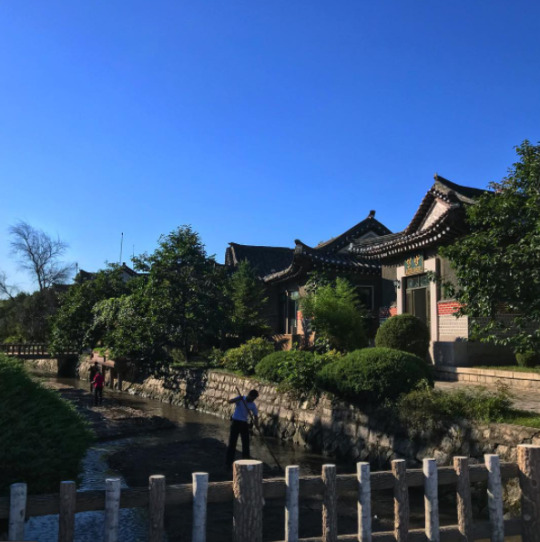
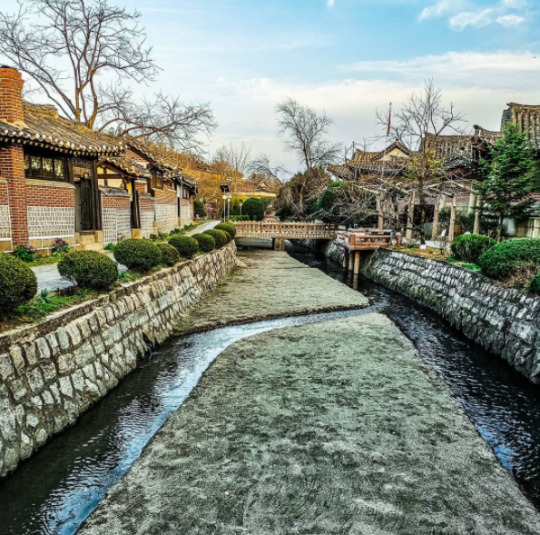
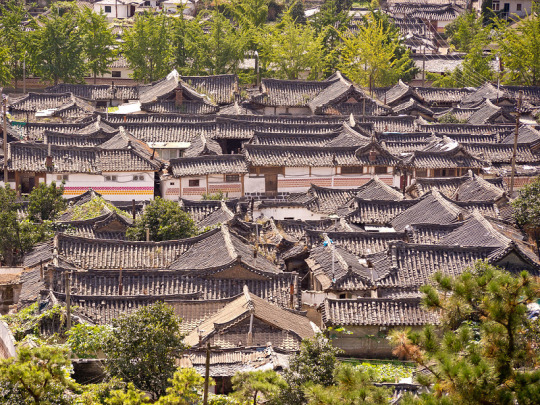
Kaesong's main street, pictured below.
Due the stifling sanctions imposed on the DPRK—which has, in various forms and intensities, been in effect since the 1950s—car ownership is still low throughout the country, with most people getting around either by walking or biking, or by bus or train for longer distances.
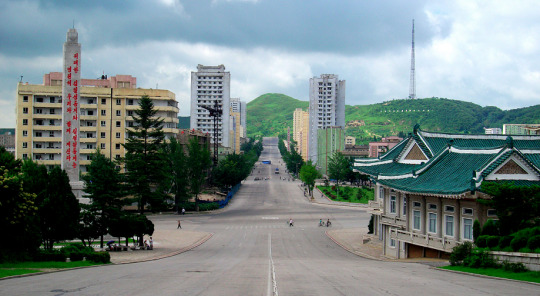
Kaesong, which is regarded as an educational center, is also notable for its many Koryŏ-era monuments. A group of twelve such sites were granted UNESCO world heritage status in 2013.
Included is the Hyonjongnung Royal Tomb, a 14th-century mausoleum located just outside the city of Kaesong.
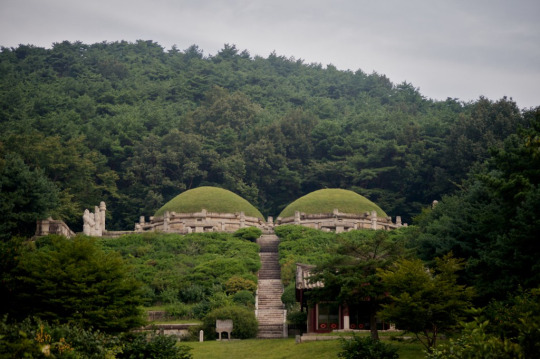
One of the statues guarding the tomb.
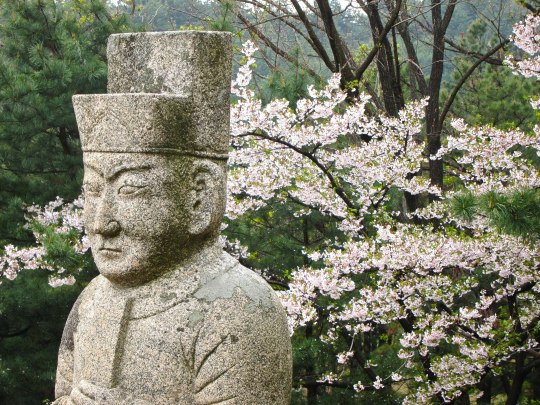
Before moving on the other cities, I also wanted to showcase one more of the DPRK's historical sites: Pohyonsa, a thousand-year-old Buddhist temple complex located in the Myohyang Mountains.
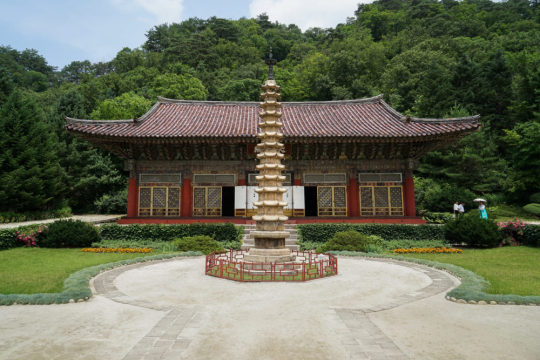
Like many of DPRK's historic sites, the temple complex suffered extensive damage during the Korean war, with the U.S. led bombings destroying over half of its 24 pre-war buildings.
The complex has since been restored and is in use today both as a residence for Buddhist monks, and as a historic site open to visitors.
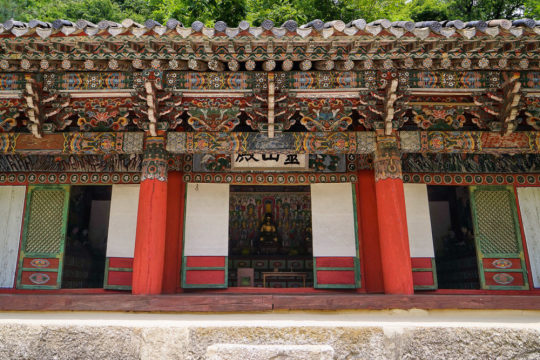
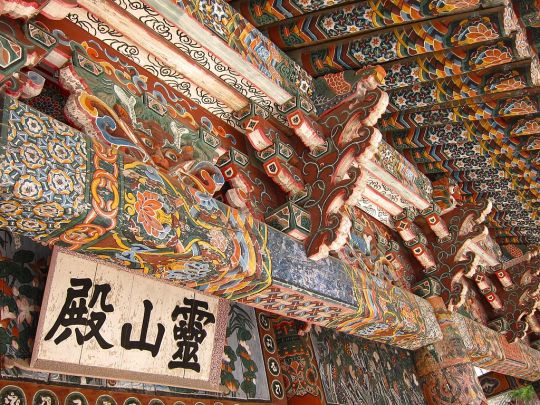
Hamhung, the second largest city in the DPRK.
A coastal city located in the South Hamgyŏng Province. It has long served as a major industrial hub in the DPRK, and has one of the largest and busiest ports in the country.
Hamhung, like most of the coastal cities in the DPRK, was hit particularly hard during the war. Through relentless aerial bombardments, the US and its allies destroyed somewhere around 80-90% percent of all buildings, roads, and other infrastructure in the city.
Now, more than seventy years later, unexploded bombs, mortars and pieces of live ammunition are still being unearthed by the thousands in the area. As recently as 2016, one of North Korea's bomb squads—there's one in every province, faced with the same cleanup task—retrieved 370 unexploded mortar rounds... from an elementary school playground.
Experts in the DPRK estimate it will probably take over a hundred years to clean up all the unexploded ordnance—and that's just in and around Hamhung.
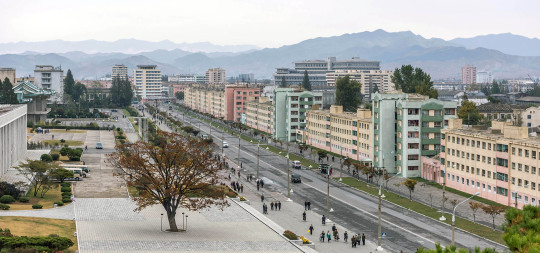
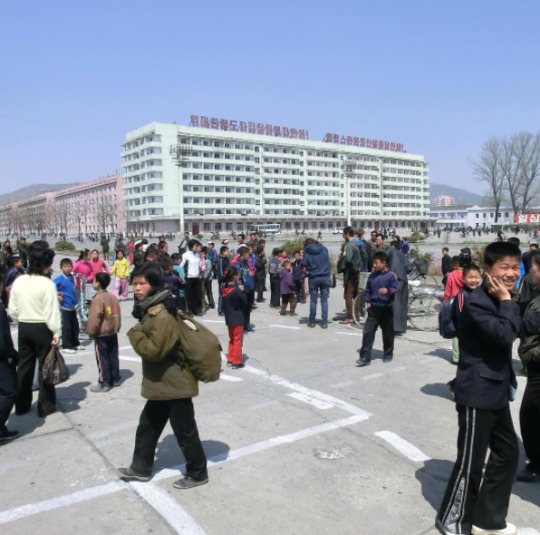
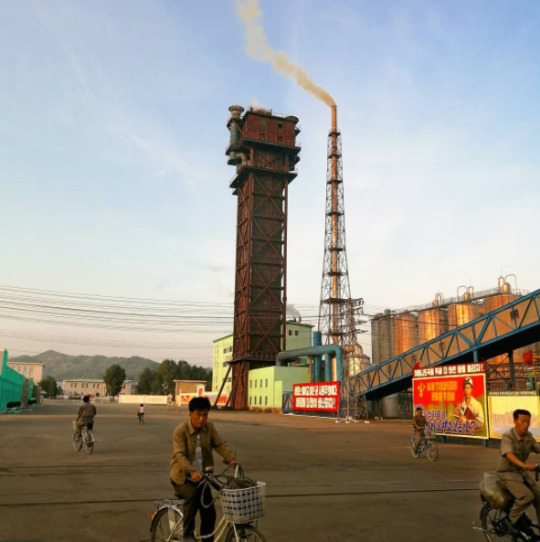
Hamhung's fertilizer plant, the biggest in North Korea.
When the war broke out, Hamhung was home to the largest nitrogen fertilizer plant in Asia. Since its product could be used in the creation of explosives, the existence of the plant is considered to have made Hamhung a target for U.S. aggression (though it's worth repeating that the U.S. carried out saturation bombings of most population centers in the country, irrespective of any so-called 'military value').
The plant was immediately rebuilt after the war, and—beyond its practical use—serves now as a monument of resistance to U.S. imperialism, and as a functional and symbolic site of self-reliance.
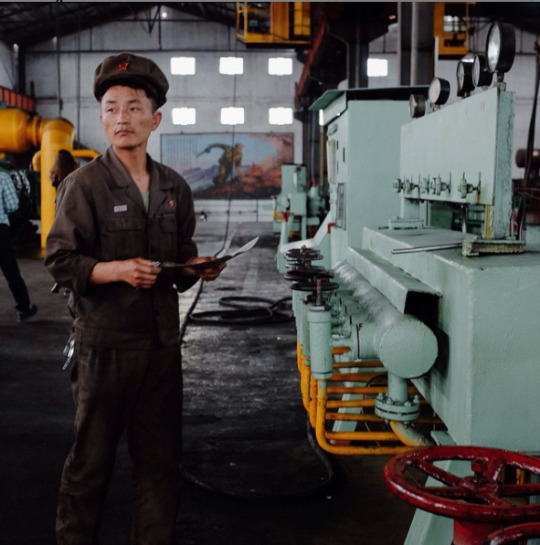
Chongjin, the third largest city in the DPRK.
Another coastal city and industrial hub. It underwent a massive development prior to the Korean war, housing around 300,000 people by the time the war broke out.
By 1953, the U.S. had destroyed most of Chongjin's industry, bombed its harbors, and killed one third of the population.

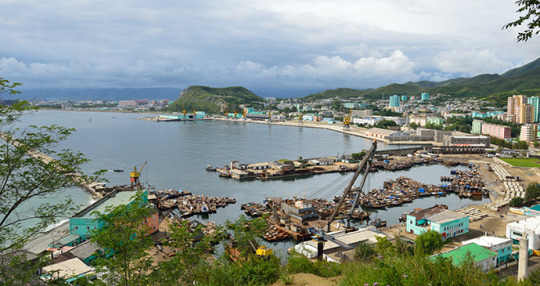
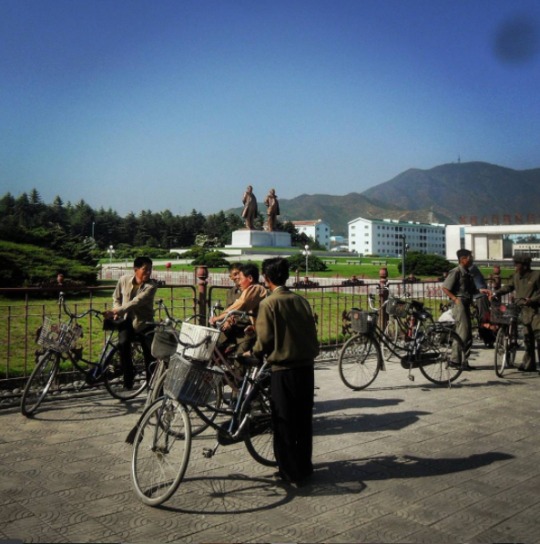
Wonsan, a rebuilt seaside city.
The city of Wonsan is a vital link between the DPRK's east and west coasts, and acts today as both a popular holiday destination for North Koreans, and as a central location for the country's growing tourism industry.
Considered a strategically important location during the war, Wonsan is notable for having endured one of the longest naval blockades in modern history, lasting a total of 861 days.
By the end of the war, the U.S. estimated that they had destroyed around 80% of the city.
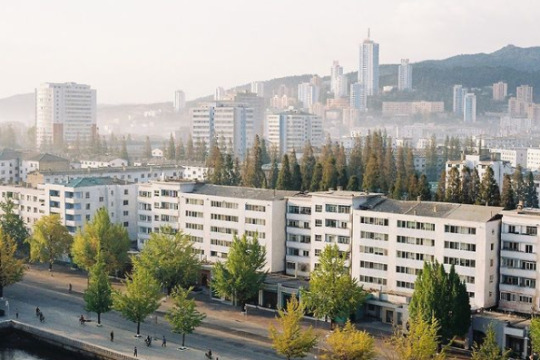
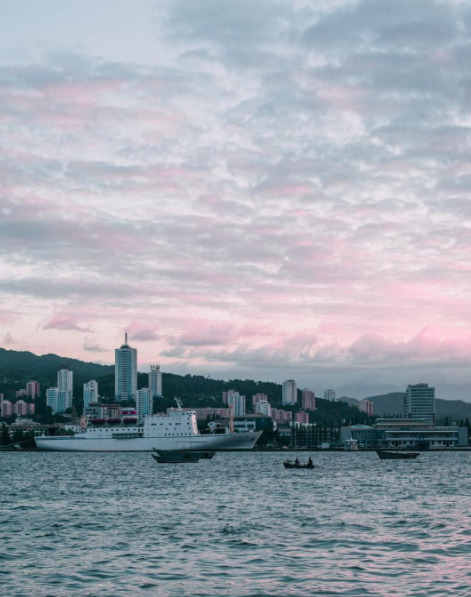
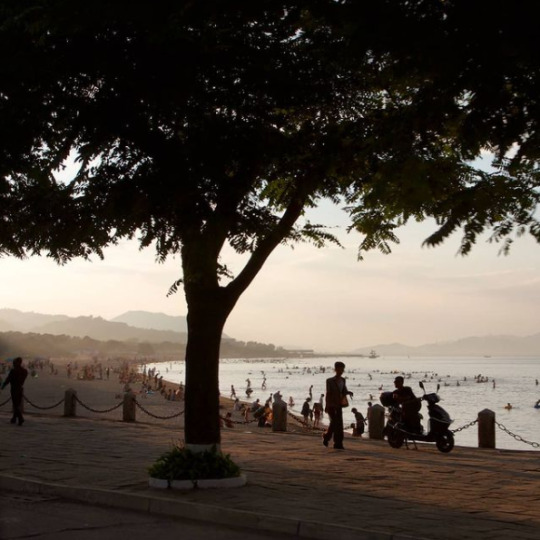

Masikryong Ski Resort, located close to Wonsan. It opened to the public in 2014 and is the first, I believe, that was built with foreign tourists in mind.

Sariwon, another rebuilt city
One of the worst hit cities during the Korean War, with an estimated destruction level of 95%.
I've written about its Wikipedia page here before, which used to mockingly describe its 'folk customs street'—a project built to preserve old Korean traditions and customs—as an "inaccurate romanticized recreation of an ancient Korean street."
No mention, of course, of the destruction caused by the US-led aerial bombings, or any historical context at all that could possibly even hint at why the preservation of old traditions might be particularly important for the city.
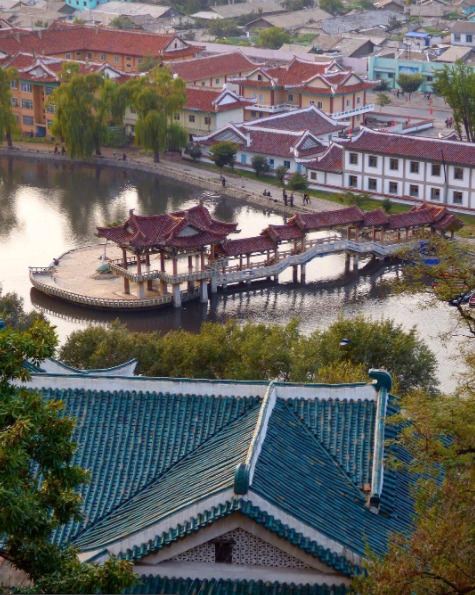
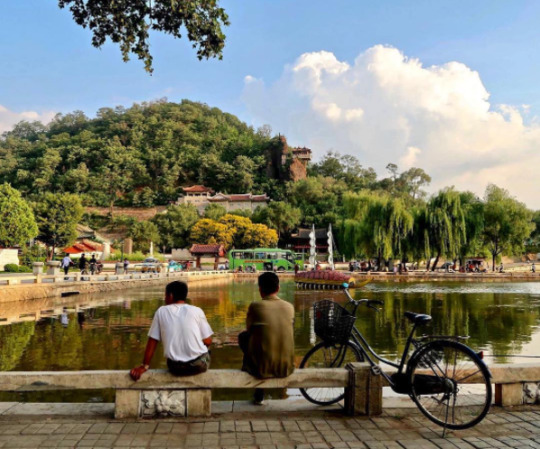
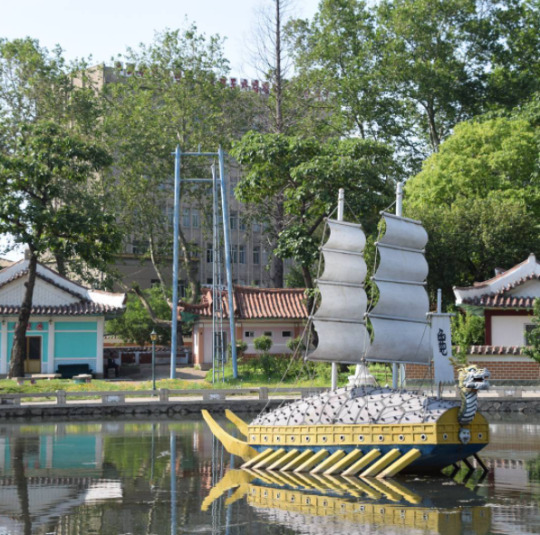
Life outside of the towns and cities
In the rural parts of the DPRK, life primarily revolves around agriculture. As the sanctions they're under make it difficult to acquire fuel, farming in the DPRK relies heavily on manual labour, which again, to avoid food shortages, requires that a large portion of the labour force resides in the countryside.
Unlike what many may think, the reliance on manual labour in farming is a relatively "new" development. Up until the crisis of the 1990s, the DPRK was a highly industrialized nation, with a modernized agricultural system and a high urbanization rate. But, as the access to cheap fuel from the USSR and China disappeared, and the sanctions placed upon them by Western nations heavily restricted their ability to import fuel from other sources, having a fuel-dependent agricultural industry became a recipe for disaster, and required an immediate and brutal restructuring.
For a more detailed breakdown of what lead to the crisis in the 90s, and how it reshaped the DPRKs approach to agriculture, check out this article by Zhun Xu.
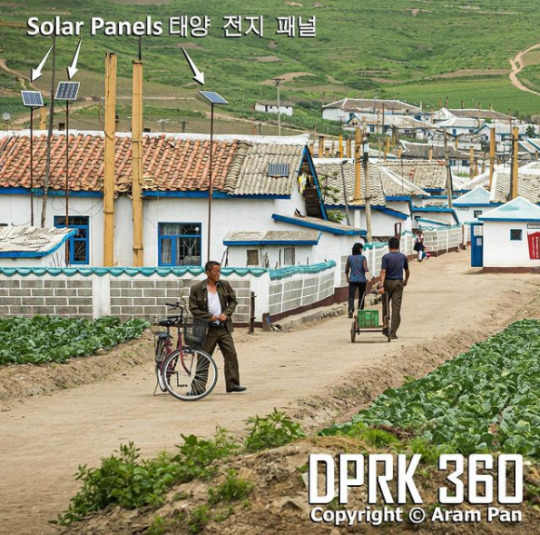
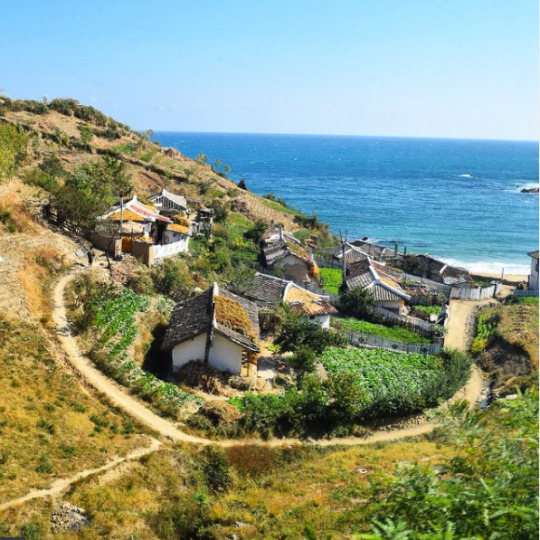
Some typical newly built rural housing, surrounded by farmland.
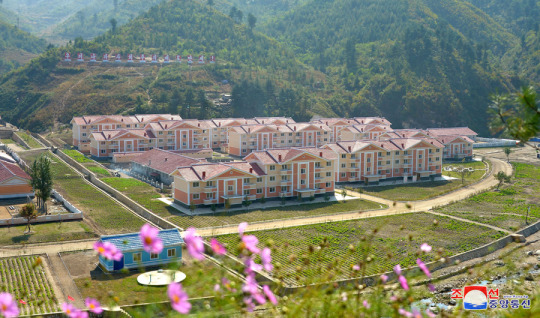
Tumblr only allows 20 pictures per post, but if you want to see more pictures of life outside Pyongyang, check out this imgur album.
#dprk#north korea#i've had this post unfinished in drafts for almost a year#also sorry about the spelling and potential formatting issues it's a nightmare to edit at this point#it was literally just meant to be a collection of picture and then the writing just sort of happened#enjoy the brief heritageposts history lesson i guess
7K notes
·
View notes
Text
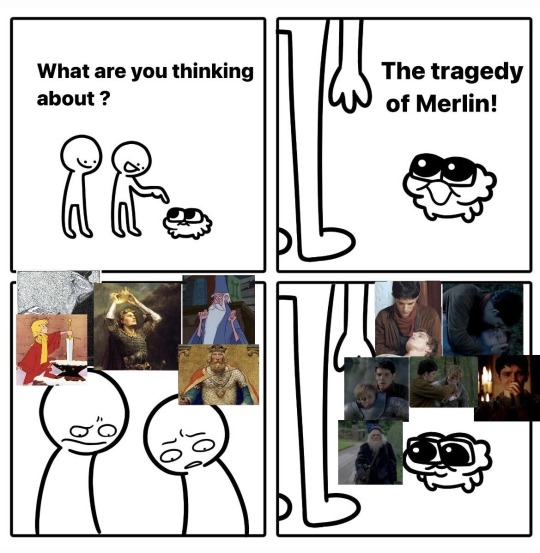
It’s Almost Like This Is all I Do everyday
#merlin#merthur#bbc merlin#Merlin meme#I saw this format and I just had to#My poor friends who have to sit through me yelling about them constantly#merlinbbc#meme
4K notes
·
View notes
Text

well - webtoons is over, gang
#sci speaks#if everyone would please just read the blog at it's intended home on tumblr#and please stop getting me to waste my energy on all these other sites that i hate then that would be primo wonderful#tapas and webtoons are actual shitholes. convenient to read sure whatever. but i hate the format anyway#and how they treat their creators.#not to mention the way tapas gamifies their interface so you're like on a fucking gambling site?? like if temu were a webcomic service?#what happened to the internet being a free and fun place for anyone to post anything.#noo. copyright laws because we want to make money we can't just host anything out of the spirit of fun and freedom#what about the money??? what if we risk money??#internet used to be a better place. i hate the earth as it is right now. the internet is like a mine that corporations dug into.#and destroyed. right in front of my eyes.#it used to be a beautiful green pasture with wildlife roaming and now it has been flattened and turned into an ugly shopping mall.#the things i do for you guys who really. really wanted me to archive it somewhere else.#i''m not doing it anymore. it is here until tumblr dies or we all enentually die and all our efforts are lost to the sands of time.#nothing matters in a cosmic sense anyway. enjoy it while it's here.
1K notes
·
View notes
Text




"Bill... Can I call you that?" / "You can call me whatever you want except 'My Love'!"
"Ha ha! That's a joke! Everybody loves me!"
Y yo a ti Ford, or whatever. @fearoftriangles pointed out that in the Spanish version of The Book of Bill: Bill says Ford can call him anything but "Mi Amor" instead of anything but "Late for Dinner" and-
...I swear, Spanish translators cannot keep getting away with this
#Its been 4 years and i still regularly think about 'Y yo a ti Cas' you can't do this to me AGAIN#joke is that this is the format of the Destiel y yo a ti cas / dont do this cas meme but i fear by making them look happy i lost the vibe#I will redraw them with the og crying meme someday tho i think it'd be funny#Gravity falls#Billford#Stanford Pines#Bill Cipher#Ford Pines#young stanford pines#bill/ford#Bill x ford#Destiel meme#Fan art#Fanart#GF fanart#Artists on tumblr#My art#The book of bill#Tbob#Love them they are the worst and apparently even more worse in spanish <333#I hope i got the words right i do not speak spanish and i know google translate is the source of all evil 😅
1K notes
·
View notes
Text
Cassandra: can you PLEASE tell me where Hawke is?
Varric, actively texting Hawke: who's Hawke?
#is this meme format outdated#if you think about it real hard#this is canon#dragon age 2#da2#dai#dragon age inquisition#hawke#varric tethras#female hawke#mage hawke#cassandra pentaghast
3K notes
·
View notes
Text

Cite your sources.
[First] Prev <–-> Next
#poorly drawn mdzs#mdzs#jin guangshan#jiang cheng#lan wangji#mianmian#Jiang Cheng stays quiet after JGS says his foul little lie about WWX not respecting or liking him.#And because it's an audio format there isn't any other information we get on what he does.#Probably sit there in silence. Fermenting on his festering abandonment issues.#I think JC has a bit of a delicate heart when it comes to the last few things he has to hold on to.#And damn if JGS can see right into that weakness. He's got a mercury tongue. Silvery and poisonous.#I know LWJ makes his rebuttal more for preserving WWX's face than reassuring JC.#But I also know they *did* team up in the past and they do have a lot in common. And canonically can't stand each other.#They are my funny little duo and I'm the one drawing the comic. I can bake my own crumbs.#Would LWJ actually comfort JC? I don't think he knows how to comfort anyone actually. Not even himself.#JC is struggling so badly in this meeting. I'm glad there are other people in this awful meeting to tag in while he has a quiet cry.#Who's ready for Mianmian to go off next comic? Let's give a 'GET HIS ASS GIRL' to our queen!
1K notes
·
View notes